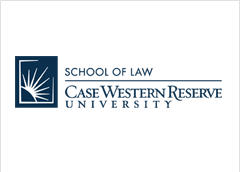Recommended Citation
Liane Colonna,
Implementing Data Protection by Design in the Ed Tech Context: What Is the Role of Technology Providers?,
13 Case W. Res. J.L. Tech. & Internet
81
(2022)
Available at:
https://scholarlycommons.law.case.edu/jolti/vol13/iss1/4
Abstract
This article explores the specific roles and responsibilities of technology providers when it comes to implementing Data Protection by Design (“DPbD”) and Data Protection by Default (“DPbDf”). As an example, it looks at the Education Technology (“Ed Tech”) sector and the complexities of the supply chains that exist therein to highlight that, in addition to the Higher Education (“HE”) institutions that procure products and services for advancing teaching and learning, Ed Tech vendors may also have responsibility and liability for the processing of student’s personal data. Ultimately, this paper asks whether there are any legal gaps, ambiguities, or normative conflicts to the extent that technology providers can have responsibility in contemporary data processing activities yet escape potential liability where it concerns issues of General Data Protection Regulation (“GDPR”) compliance.
This paper argues that there is befuddlement concerning the determination of which parties are responsible for meeting DPbD and DPbDf obligations, as well as with regards to the extent of this responsibility. In some cases, an Ed Tech provider is a controller or processor in practice together with a HE institution, yet, in others it, may not have any legal responsibility to support the development of privacy and data-protection preserving systems, notwithstanding the fact it might be much more knowledgeable than a HE institution that has procured the Ed Tech product or service about the state-of-the art of the technology. Even in cases where it is clear that an Ed Tech provider does have responsibility as a controller or processor, it is unclear how it should share DPbD obligations and coordinate actions with HE
institutions, especially when the Ed Tech supplier may only be involved in a limited way or at a minor phase in the processing of student data. There is an urgent need to recognize the complex, interdependent, and nonlinear context of contemporary data processing where there exists many different controllers, processors, and other actors, processing personal data in different geographical locations and at different points in time for both central and peripheral purposes. Likewise, the complexity of the supply of software must also be emphasized, particularly in contexts such as the supply of educational technology where technology providers can play a key role in the preservation of privacy and data protection rights but may only have a tangential link to the universities that ultimately use their products and services. There is also a need for a more dynamic approach of considering responsibility regarding DPbD. Instead of thinking about responsibilities in terms of “purpose” and “means” the law should shift towards a focus on powers and capacities. The law should also clarify whether technology providers must notify controllers about changes to the state-of-the-art and, if so, to what extent.
